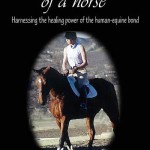
While a quick internet search reveals a litany of ways to treat mental illness, and especially trauma, the majority of these methods involve a significant cognitive component, which may not always be the most comfortable thing for a traumatized person to consider. To be sure, one of the strongest concerns of those clients with a traumatic history is having to re-experience what was overwhelming to them in order to feel better. And yet, many experts wonder, how else may they begin to have some reprieve from their symptoms?
But in order to begin the process of healing, trauma demands a comprehensive understanding, just as any other diagnosis would. That is to say that the effects of trauma on an individual are not just housed in the thoughts processes, but rather involve a physiological shift from what was a previous level of functioning. For the person who knows himself as a somewhat calm person who is able to contain himself/herself emotionally, this may mean now feeling quite out of control emotionally.
However, this may also mean having physiological symptoms that are not easily regulated. Imagine waking to a racing heartrate, shallow breathing, a full sweat, and poor orientation. These are just some of trauma’s physiological effects. And as much as the person who experiences this may want relief, talking about it may not resolve things.
On the other hand, what might be needed is to do something that induces a physiological calm. Running, or almost any form of exercise for that matter, has been noted to have a positive effect on cases of trauma.
Well, being around horses, for a separate reason, has also been demonstrating to have a calming effect on the physiological system of the traumatized person. Much of the reason for this is related to the fact that being in the vicinity of an animal that relies almost exclusively on physiological responses to communicate draws the person’s attention to their own physiology. Unlike humans, horses are simply not able to ignore a racing heartrate, increased skin temperature, or shallow breathing. To a horse, all of these factors signal danger. And when faced with this, a horse will respond by registering alarm — the head will raise, the eyes widen, the nostrils flare, and the ears will scan around rapidly. With these obvious cues, the person who might not have otherwise known he/she was physiologically aroused is now aware of just what is happening under the surface. Then, by paying attention to the horse’s responses, the traumatized person can work to contain these responses, and thereby begin to harness some of the physiological remnants of trauma.
And while much more therapeutic work may be required to return to the level of functioning that existed before the trauma, certainly feeling calmer is a great start.